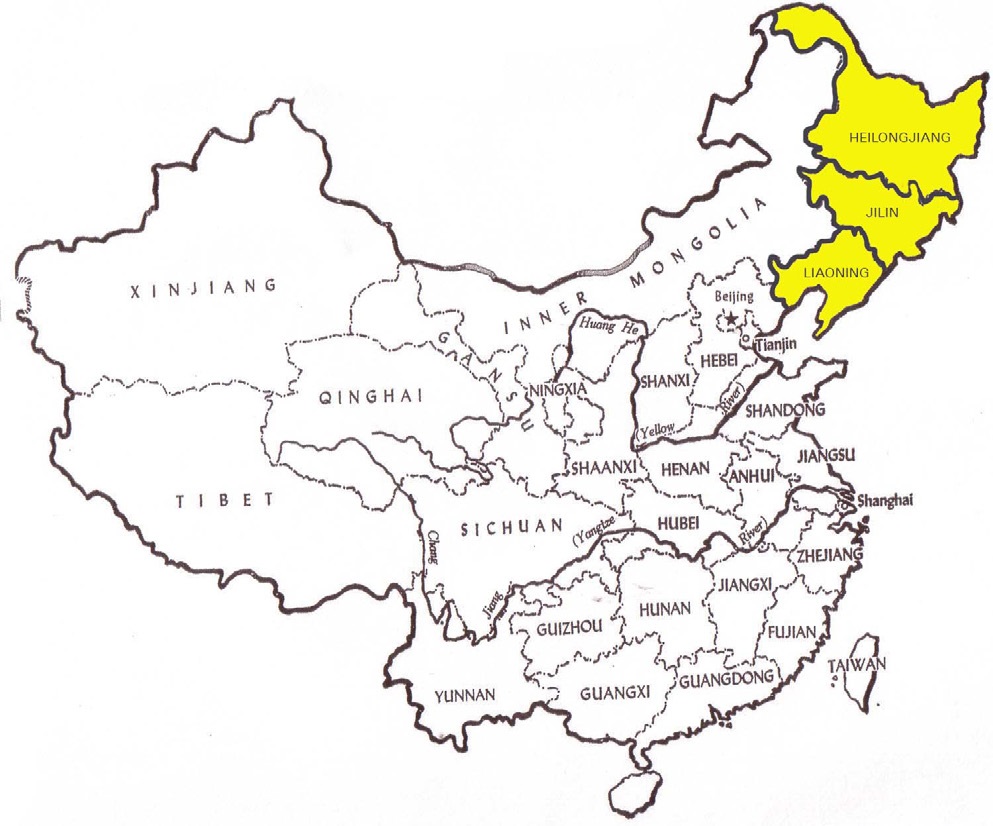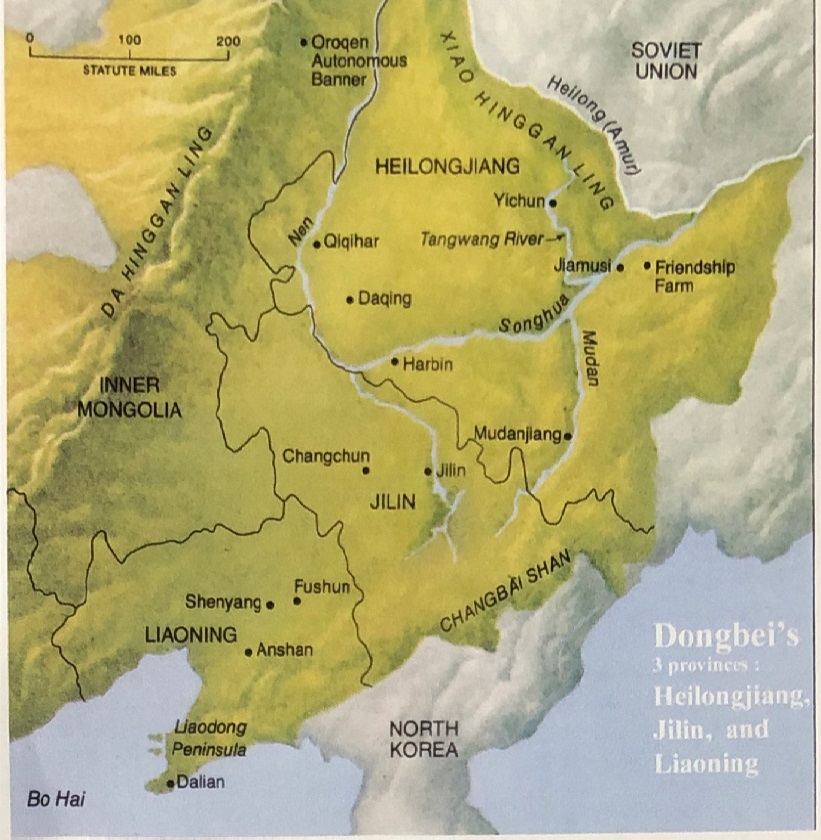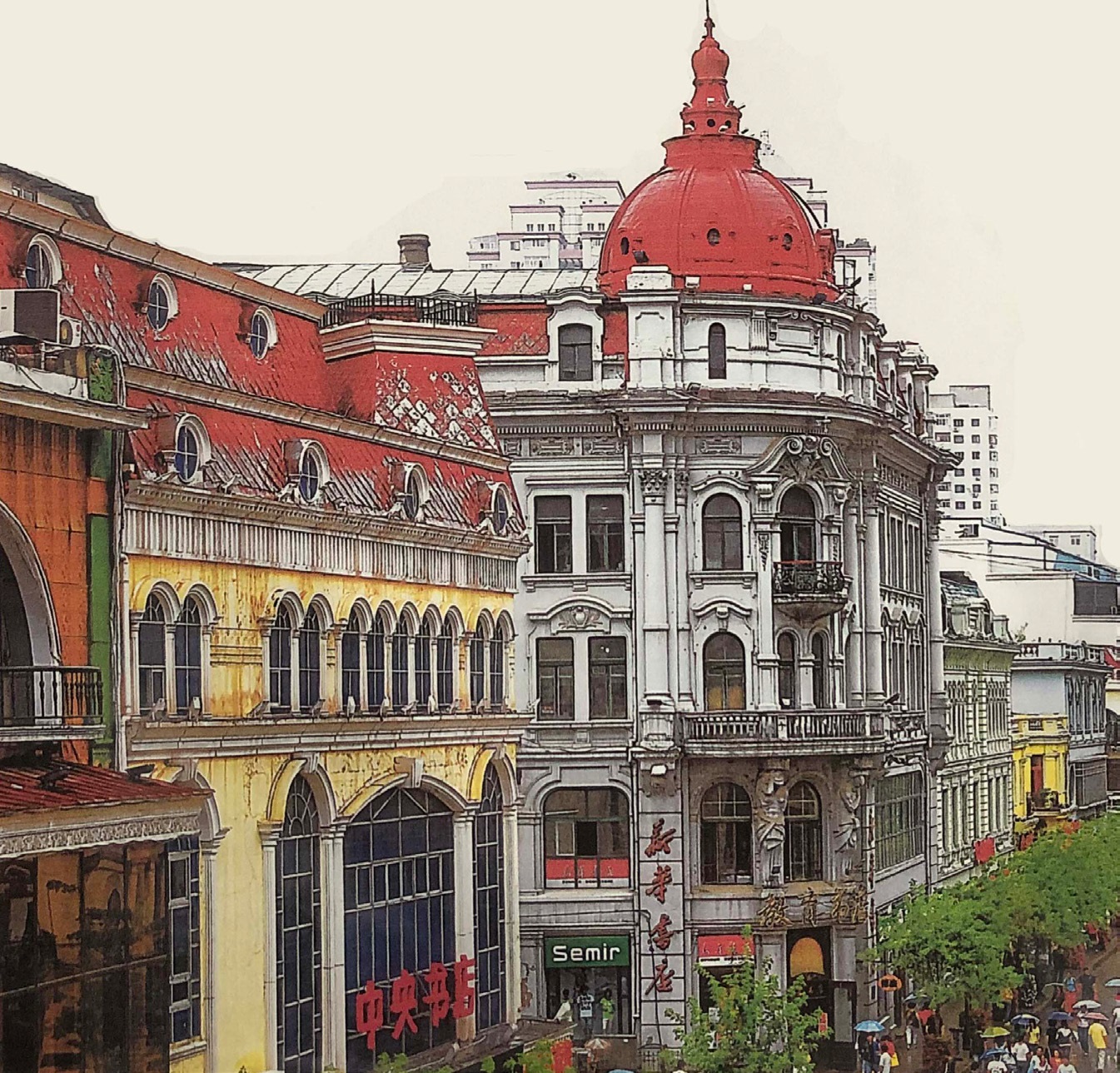
| What is Flavor and Fortune? |
| How do I subscribe? |
| How do I get past issues? |
| How do I advertise? |
| How do I contact the editor? |
Read 12936479 times
Connect me to:
| Home |
| Articles |
| Book reviews |
| Letters to the Editor |
| Newmans News and Notes |
| Recipes |
| Restaurant reviews |
| Article Index (all years, slow) |
| List of Article Years |
| Article Index (2025) |
| Article Index (last 2 years) |
| Things others say |
| Related Links |
| Log In... |
| Authors |
| Categories & Topics |
Dongbei is Northeastern Food
| by Jacqueline M. Newman |
Regional Foods
Fall Volume: 2019 Issue: 26(3) pages: 13 to 18
In the Northeastern corner of China are three provinces near Mongolia in the West, Russia in the North, and Korea not close but in the south whose cuisine is not well-known in the US, but restaurants featuring them are growing. They are the provinces of Heilongjiang, Jilin, and Liaoning whose people like many meats, pickled vegetables, dumplings, soups, and hot pots; also potatoes, a Russian influence. They also adore foods developed in the mid-1800s when China ceded part of this region near the northern terminus of the Great Wall.

Larger than Spain and Portugal together, this is more than three thousand square miles recognized for an important waterway emptying into the Yellow Sea, beginning at the seaport in Harbin and sitting on the Songua River and emptying into the Sea of Japan. Here live more than one hundred million people, the provinces with the capitals of Shenyang, Changchun, and Harbin, respectively. In the sixteenth century this area was led by Nurachi (1559 - 1628) who was building an Imperial Palace that was later completed by his descendants. His son, Abahai (1592 - 1643), did establish the Qing Dynasty in 1636; and he and many of his followers moved south after conquering Beijing in 1644, and by 1680, his people controlled most of what is now China.
During China’s long history, only two dynasties were led by non-Han folk. The Mongols ruled for less than one hundred years (1279 - 1368 CE), the Manchurians for more than twice that time (1644 - 1911 CE); the Mongols ruling during the Yuan Dynasty, the Manchurians during the Qing. Both were Northern Chinese people who were very different from each other. The Manchu were better at stabilizing society and supporting past Chinese cultural traditions; they also shared leadership with the Han in the Northeastern Provinces once called Fentien, Kirin, and Heilonghkiang.
Both groups loved meats, lamb particularly, also goose, venison, and horsemeat; and Heilongjiang was home to Xianbei, Khitan, and Jurchen people. The Manchu were home in Manchuria for whom their area was named.
Harbin, the capital of Heilongjiang, was called ‘little Moscow’ with many Russian foods loved there, many buildings built by Russians and in the Russian style. The foods included monkey head mushrooms botanically known as Hericium orinaceaus, and deer, rabbit, sturgeon, grapes, corn, even ice cream.
These three provinces are where most Manchurians now live; and they are China’s second largest ethnic nationality. All schools there now teach in Mandarin, but before, people here spoke, read, and wrote a Turguisic language now almost extinct, that did use the Mongolian alphabet.
Here they did grow many vegetables that withstood cold weather because they have many long winter months and they liked and still do, most cold-weather vegetables including those in the cabbage family and potatoes, too. Other than growing them, they grew and still grow ginseng, soybeans, and barley, and they mine lots of coal, and they use the Manchurian Imperial symbol which is a tiger with opium in its mouth. Most Manchurians are light-skinned, tall, and descendants of warring groups, some of whom did live here years ago.
Historians tell us these people came from along the Heilong and Wusuli Rivers while anthropologists say they probably were members of the Sushen tribe mixing with Yilou, Huji, Mohe, and Nuzhen tribes, all probably native to regions north of the Changbai Mountains. Those who did research them, believed they did use stone arrow heads, and wooden pomegranate bows and arrows, and arrived in this area some time between 11 and 221 BCE, were warring groups who gave them as tributes to their rulers, did support Zhou Dynasty folk, and probably did so since 1045 BCE.
As there are few written records about these forebears, their origins may have been Jurchen people, once known as ‘reindeer people,’ who probably settled near these rivers, raised many animals, and were great warriors and great horsemen, too. There are those believing they became Manchurian before the Liao Dynasty (936 - 1125 CE), and in 1134 CE destroyed a previous dynasty. However, this is not definite even though many tried to trace their ancestry. None have been successful doing so by name, place, time, or by foods they ate and still eat.
Han Dynasty people did establish rule during the Ming Dynasty (1368 - 1644 CE) and gained considerable control after the Jurchens who then became powerful but left or disappeared. The Han acquired many tribal lands, forged many tribal alliances, and enhanced military leadership after their leader became a Buddhist with many associations with other Chinese. These increased when his son, Hung Taiji, adopted the name of a local Manchurian God, replaced the Ming Dynasty with the Qing, and settled as China’s last ruling dynasty who were farmers growing lots of sorghum, millet, and rice, adding corn some years later, tending apple trees, raising pigs, and silkworms, too, growing tobacco, and hunting boar and small animals, and gathering ginseng and many mushroom types. They gradually adopted the Mandarin language thanks to their schools, and then fostered it.

Their men who were excellent archers also skilled at horsemanship, were easily recognized as they wore short-cuffed jackets over long gowns, and braided their hair in long queues. Their women were recognized by coiling their hair atop their heads, and by long earrings and embroidered shoes. They lived in three-section houses, the middle was their kitchen, the sides were where they slept.
Nurachi (1559 - 1626 CE) and his followers did many things including moving the capital from Nanjing to Beijing, absorbing and reorganizing tribes, forbidding the use of Jurchen paternal heritage, and incorporating Mongolian, Korean, and other tribes with Han people already there. In 1644, he changed the dynasty name to Qing, conquered Ming strongholds, and took over what became a multi-cultural society. His descendants ruled China until deposed and the Qing Dynasty ended, but before it did, he concentrated cuisine and culinary behaviors, updated homes, moved their beds known as kangs to the outer walls, moved their elders to northern rooms, younger families to southern ones, and guests and children to their western sides.
In the kitchens, he encouraged the preparation of millet often mixed with ground glutinous rice. This was steamed as pancakes, breads, buns, dumplings, and other foods; he encouraged use of pickled cabbages and other pickled vegetables, preserved pork and other meats most often in wine, ground soy beans and almonds into milks, and made milk teas, sour teas, and fruit teas for all to enjoy, encouraged drinking assorted waters. And a burned rice one became popular; he also helped get the people cooking sweet bean paste with deep-fried rice, made more pastries and rice mixtures as congees, and helped his people enjoy a special one they called Eight-Treasure Congee so named to eat it in the eighth lunar month when made with millet, regular and glutinous rice, sorghum, beans, peanuts, brown sugar, and walnuts.
Before New Year’s Eve, most Mongolians and Manchurians made hundreds of rice-flour pastries to eat during the fifteen day New Year holiday, some with fish to eat New Year’s Eve as wishes for an abundant year, and prepared chunks of boiled meat as wishes for many meat meals even meatballs in brown sauce as wishes for family unity. He also encouraged many crescent-moon jiaotze to be filled with rice, meat, and vegetables as wishes they would live many more moons. These were made before New Year’s Eve to be enjoyed that night at the Reunion Dinner or after it with broom-tail millet fritters and/or noodles, and syrups as wishes for a sweet upcoming year.
Also, at many festivals they enjoyed saqima and cookies made with lots of brown sugar or boiled honey with lots of stewed glutinous rice flourishes or made and enjoyed pastries wrapped in perilla or linden leaves calling them sanzi that were made with rice, buckwheat, and/ or broom-tail millet.
Nowadays, the people lving in these three provinces call themselves Dongbeiren, have many banquets known as Manhanquanxi, or Man-Han banquets that grew in popularity particularly during the rule of Qianlong, the fourth Emperor who ruled from 1736 to 1795, organized many special events, even some in restaurants, and years later many of his chefs and cooks did open eateries including the Fangshan in the mid 1920s in Behai Park. These Qing Dynasty chefs made many palace dishes there, one written had two hundred courses lasting for three days.
Quianlong and the rulers that followed him made many special events there or at the palace, some celebrated an emperor’s rise to the throne, winning a battle, or honoring a family member’s special birthday. Some were called ‘complete Man-Han Banquets’ and were only for royalty, others were rewards for scholars, an honor for someone’s longevity; and there was a famous one for a thousand senior citizens. Some did serve Han foods, others only Manchu foods, and a few served both. One was a ‘Five-Nation Banquet’ serving Manchu, Han, Tibetan, Hui, and Mongolian foods, all served elegantly beginning with a gorgeous cold plate followed by a fancy multi-item hot one. Every dish after these two were served one at a time, all looking lovely.
As the years went on, these banquets became fancier, some served when poems were read or had plays, singers, or jesters to entertain the guests. In 1932, when the Japanese occupied China, they were even more popular, and served in Manchukuo as this northern region was called before, during, and after the 1945 Yalta Conference.
Emperor Qianlong was Manchurian and known for liking a bowl of sugar with bird’s nests soon after he got up in the morning. His other meals often began with pickled cabbage or another preserved food which he said did keep him alert. After he died, local foods included more Korean dishes made with dark vinegar or a kimchi, chili paste, or another spicy item. Some included Spam or raw fish seasoned with wasabi, vinegar, or sesame oil.
The rulers that followed him took advantage of abundant ground water resources and acres of fungi in their forests, many of China’s seventy different birds, fifty different livestock items, a hundred different fish and other foods from the sea, sixty different fruits and nuts, more than a hundred different vegetables, and the country’s forty varied grain items. These expanded main dishes served at China’s royal tables and eventually made their way into affluent homes where potatoes were often served shoe-string-style, lamb prepared in many ways, and meals including many thick soups, pickled vegetables, braised wheat gluten, stir-fried beef and lamb with lots of cumin, spicy bean sprouts, minced spicy shrimp balls, many different mushrooms, shrimp paste with stuffed scallops, meatballs with pickled eggplant, and other local items.
Several recipes show off some of them, and can be from Jiilin, Harbin, or elsewhere in Dongbei, many served with winter melon, black peppercorns, or dried scallops. We encourage readers to make and taste them, enjoy their Manchurian, Russian, Korean, or Mongolian heritage from this cold corner of China. Some were only popular then, some only popular more recently, a few when Puyi ruled. Many are thanks to new industries or when served with items such as deer tails or deer antlers.
Should you plan to make them, if using deer tails, submerge them before removing their fur, and stew them for at least two hours with several Korean pastes and lots of cinnamon. A few are from earlier times and still popular today, particularly in Harbin. That city has the highest latitude of any provincial Chinese capital, is often frozen two hundred or more days each year, has a famous ice festival annually, and many Russian-built buildings on its Central Avenue (as seen on the cover and page 18). One was built by Jewish merchants as was the famous Modern Hotel known as Madie-er Binguan both the Huamei Western Restaurant, both founded by Russian Jews and places passengers visited before or after taking the Chinese Eastern Railway system to or from Dongbei.
Harbin was known for the St. Sophia Orthodox Cathedral built there in 1907 designed by a Russian architect to be an army church for Czarist soldiers, and known for the New Synagogue (seen here) at Jingwei Street in the Daoli District with a Jewish star on its dome. It is the largest Jewish Synagogue in China, was built in 1918, renovated in 2004, and now a museum of Jewish history and culture. Inside, it has more on its ceilings, walls, floors, even its lamps.

No Jewish resident lives in Harbin now, but many descendants return each year to pay respects to their deceased relatives buried in the Huangshan Jewish Cemetery with more than five hundred graves of those who did live here including relatives of former Israeli Prime Minister Yitzak Rabin, the grandfather of the former Prime Minister Ehud Olmert, and other less well-known buried there. Many are visited every year and this is known as a small rock is often left on the top of the tombstone showing someone came to pay their respects to the deceased buried below. What follows are some popular dishes from this region, here for you to enjoy, prepare, and taste.
| Heilongjiang Potatoes |
|---|
1 medium-size eggplant, peeled and cut in thin strips
1. Soak potato, carrot, and eggplant strips, each in its
own bowl, in cold water for one hour, then drain and
dry them in their own towel.
|
| Monkey Head Mushroom Soup |
|---|
1/4 pound pork, chopped
1. In a stew pot, bring the pork to a boil, reduce the
heat, and simmer with the fish maw, chopped dates,
tangerine peel, and goji berries for one hour.
|
| Fish and Lotus Root Stew |
|---|
½ pound skinless boneless minced fresh white fish
1. Mix fish, minced mushrooms, chicken fat, egg white,
and half the fresh ginger, and al the rice vinegar, salt,
and the cornstarch mixture, shaping this into a half-inch
thick pancakes.
|
| Braised Beef Soup |
|---|
1/4 pound beef
1. Marinate the beef and the rest of the ingredients
for one hour, then bring it to the boil and stir in the
cornstarch mixture until it thickens.
|
| Fried Prawn Balls |
|---|
I salted egg yolk
1. Steam salted egg yolk until firm.
|
| Sichuan Bean Sprouts |
|---|
1 pound bean sprouts, tails removed and discarded
1. Rinse and then drain tailless soy bean sprouts.
|
| Spiced Lamb |
|---|
½ cup molasses
1. Mix pomegranate molasses, chopped garlic, olive oil,
all the ground spices, and add the lamb cubes and let
them rest one hour at room temperature, then drain
and dry the meat cubes.
|
| Cumin-Scented Eggplant |
|---|
2 pounds eggplant, peeled, and sliced in half inch slices
1. Mix eggplant slices with salt in four cups of tepid
water, and stir until dissolved.
|
| Pork and Cabbage Stew |
|---|
½ pound ground pork
1. Mix pork, mushrooms, egg white, half the ginger,
all the rice vinegar, salt, and the cornstarch mixture,
and shape this into a half-inch thick pancake.
|


Copyright © 1994-2025 by ISACC, all rights reserved
Address
3 Jefferson Ferry Drive
S. Setauket NY 11720